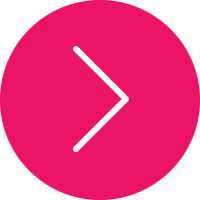
My Educational Technology Philosophy
“Tell me and I forget. Teach me and I remember. Involve me and
I learn.” -Benjamin Franklin
From the moment a student walks into my classroom, I have an opportunity that no one else has. I have the opportunity and an obligation to help that student reach their highest potential, not only in education, but in setting a foundation for the rest of their life. For 7 or 8 hours a day a teacher is an educator, a caretaker, a counselor and a friend to that child. It is important that teachers realize that they fill all these roles for the children they teach. My goal with each and every new class is to give my students the tools needed for them become life-long learners and life-wide learners.
Throughout my career and research I have come across many different instructional guides and theories. I completed my undergrad at UNT and went on to teach 2nd grade for 6 years, where I was the 2011-2012 Teacher of the Year. It was an incredible honor. I believe what helped me gain that honor is the fact that I put students first. I also continue to grow in my education so that I can make that possible.
I feel like it’s important to as an educator to keep an open mind when determining which teaching practices will be applied from day to day and lesson to lesson. A recent planning strategy that I was introduced to is called Universal Design for Learning, or UDL. This is a completely new concept for me but honestly it should be something that is put in to my everyday practice. UDL can be used to create “goals, methods, materials, and assessments that work for everyone--not a single, one-size-fits-all solution but rather flexible approaches that can be customized and adjusted for individual needs.”(1) This can easily be carried out by using the layout they provide of the what, why and how of learning. (1) I also strive for students to work on the highest-level thinking portion of Blooms. While I do see benefits in all the Bloom’s categories, I believe when students are working on the higher levels they are much more engaged and creative in their learning. Thus, allowing students to have a personal connection with their learning and absorb more knowledge.
One major thing that has changed since I first began my career in education is the amount of technology that is used throughout the school and in individual classrooms. I’ve seen teachers struggle to find ways to incorporate technology into their plans, but I’ve also seen the great things that happened for students when technology is used in a way to benefit their learning. Several studies have questioned how much “learning” actually takes place due to technology integration. It is my personal belief that technology is an incredible resource to reach students by a means that they are intrigued by. Research shows that students who are actively engaged in their own learning are more likely to retain the information being learned and technology helps with this.
I know the words “technology integration” can be scary to some educators but regardless, technology is a learning tool, a SIMPLY AMAZING learning tool that must be integrated into 21st century classrooms. Technology these days is more and more prevalent in students’ lives. We can’t simply ignore it or put it on the back burner because we aren’t comfortable with it. This is why I am taking great strides in furthering my own education to incorporate technology into education in the most effective ways possible. Technology can be an insanely valuable teaching tool if we just teach students how to use it in the correct manner, but first we must teach ourselves.
“We need technology in every classroom and in every student and teacher’s hand, because it is the pen and paper of our time, and it is the lens through which we experience much of our world.” - David Warlick
References:
-
What is Universal Design for Learning | National Center On Universal Design for Learning. (n.d.). Retrieved August 01, 2016, from http://www.udlcenter.org/aboutudl/whatisudl

